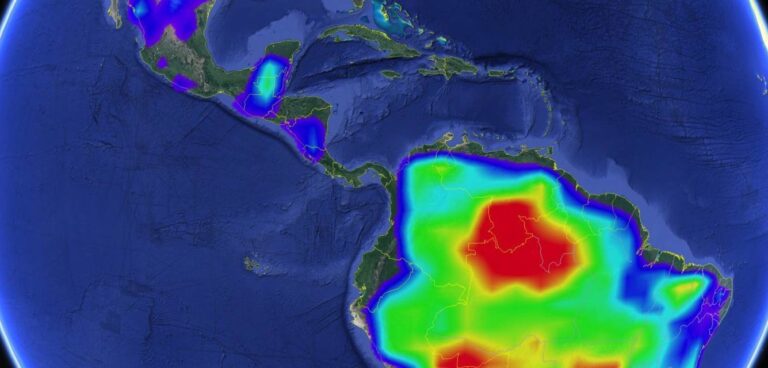A new study led by a team of University of Minnesota researchers, with co-authors from the Cooperative Institute for Research In Environmental Sciences (CIRES), claims to provide the first global satellite measurements of one of the most important chemicals affecting Earth’s atmosphere, isoprene.
This is a natural hydrocarbon emitted to the atmosphere in vast quantities—approximately 500 billion kilograms per year—by plants and trees. It is chemically reactive, and once in the atmosphere, combines with human-caused pollutants to adversely affect air quality. Isoprene also reacts with the main atmospheric oxidizing agent—called OH radicals—and therefore reduces the capacity of the atmosphere to scrub itself of pollutants and greenhouse gases.
Scientists look to atmospheric models to predict current and future atmospheric composition and air quality, as well as to diagnose the atmosphere’s ability to remove greenhouse gases and air pollutants. However, isoprene emission rates are highly uncertain due to sparse ground-based measurements, and researchers are also unsure of the extent to which isoprene acts to suppress or sustain the abundance of OH radicals in the atmosphere.
The team behind the study says it has developed the first-ever global measurements of isoprene from space. Using observations from the Cross-track Infrared Sounder (CrIS) sensor on Suomi NPP, a NOAA-operated satellite, researchers developed a retrieval method that uses machine learning to determine the atmospheric concentration of isoprene over different parts of the world. They combined these measurements with atmospheric modeling to test current scientific understanding of global isoprene emissions and of how isoprene affects atmospheric oxidation. The research was published in the journal Nature.
“Isoprene is one of the most important drivers of global atmospheric chemistry,” said lead author Dylan Millet, a professor in the University of Minnesota’s Department of Soil, Water, and Climate. “These satellite measurements provide new understanding of how Earth’s biosphere and atmosphere interact.”



